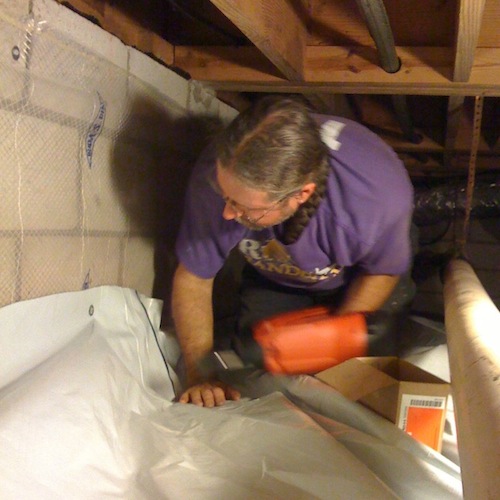OSHA Has New Rules for Working in Crawl Spaces and Attics

Who among us doesn’t love spending time in crawl spaces and attics? I’ve certainly done my time there. A lot of my friends hang out there, too. I found out in an email from the Building Performance Institute (BPI), however, that the US Occupational Safety & Health Administration (OSHA) will have new requirements for companies who send their workers into areas defined as “confined spaces.” This has the potential to bring some significant changes to the way home performance companies, weatherization contractors, and others in the construction industry do their jobs.
Highlights of the new OSHA standard
Here are some of the new requirements:
- Companies have to assess each jobsite for the presence of confined spaces.
- If confined spaces exist and their workers will go into them, they may need to do testing “with a calibrated direct-reading instrument, for oxygen content, for flammable gases and vapors, and for potential toxic air contaminants, in that order.”
- Permits will be required, but the contractor writes them up and posts them. You don’t have to go down to the building department for this.
- Only those employees trained and authorized will be allowed to enter the permitted confined space.
- In some cases, the employer will have to have an attendant monitoring the confined space from outside.
And how exactly is a confined space defined? It’s “a space that:
- Is large enough and so configured that an employee can bodily enter it;
- Has limited or restricted means for entry and exit; and
- Is not designed for continuous employee occupancy.”
This is a big deal and has the potential to add significant cost to air sealing, insulating, crawl space encapsulation, and all those things we do in confined spaces. If it applies to energy auditors and raters, too, that could really be difficult because many times they go into a house on their own. The standard says it applies to “employees engaged in construction activities,” which leaves it a little vague. Is testing duct system static pressure or inspecting the building enclosure a construction activity?
And what about HVAC contractors and home inspectors and pest control companies? A lot of that work is done by one-person crews. Will they all have to double up now?
What you should do to learn about it
OSHA has a page on confined spaces with links to other pages and pdf documents describing the new standard. If you have anything to do with confined spaces, you should spend some time there and make sure you understand the new rules. Here are links to the two main pdfs:
- OSHA Fact Sheet on Confined Spaces in Construction: Crawl Spaces and Attics (pdf)
- Standard 29 CFR 1926, Subpart AA―Confined Spaces in Construction (pdf)
Also, BPI is going to host a webinar on this topic soon. They haven’t set the date and time yet, so if you’re not already on the BPI mailing list, you might want to sign up.
Related Articles
What Is the Best Way to Deal with Crawl Space Air?
Are You Breathing Dead Possum? — Crawl Spaces, HVAC, & IAQ
The #1 Question to Ask before Putting Spray Foam in Your Attic
NOTE: Comments are moderated. Your comment will not appear below until approved.
This Post Has 8 Comments
Comments are closed.

The burning question here.
The burning question here. Will this impact the annual crawl space/wine party at BS summer camp?
Haha! That's
Haha! That's actually one of the things that went through my mind this morning as I was writing the article, Bill.
It sounds like a big pain in
It sounds like a big pain in the rear end but confined spaces can be very dangerous.It will pinch the smaller companies worst if they get caught..
In Florida, energy raters are
In Florida, energy raters are definitely considered construction workers. Anybody that enters a construction a construction site prior to closing is a construction worker (or trespassing).
Attics & crawlspaces
Attics & crawlspaces have been covered by OSHA for 20 years. The recent OSHA action clarifies the standard.
We all have a duty to protect ourselves and our employees. Evaluate every worksite prior to doing any work. Eliminate the hazard if you can. Deal with it if you can’t.
When was the last time you
When was the last time you heard of an employee being harmed in a crawl space by hazard(s) associated with confined spaces?
“We estimate that every
“We estimate that every year, this rule will prevent 780 serious injuries and save the lives of 5 construction workers. If this new rule had been in place and followed, it could have saved the lives of two workers killed in Georgetown, Idaho last year.” Dr. David Michaels
Workers who are here
Workers who are here illegally build and work on most of the homes. Legal people can’t get work. There seems to be no random checking… and the builders become millionaires by paying non living wages, or not paying the illegal workers etc.
It would be ok if all workers were legal and had the same safety rules and it was enforced…..and it was an even playing field and it created local, safe jobs. Please.